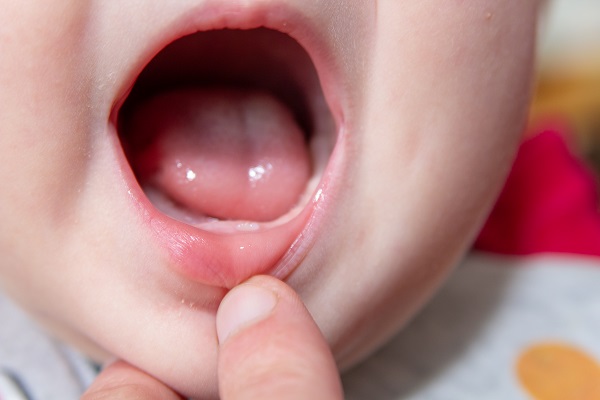4 Important Facts About Lip Tie Laser Surgery

Lip tie laser surgery is a surgical procedure where the band of tissue in a tongue tie or lip tie is released using a soft tissue laser. A tissue laser cauterizes and sterilizes the tissue it contacts while vaporizing the problematic tissue.
You may have heard of a tongue tie in which the tissue that attaches the tongue to the bottom of the mouth (the lingual frenulum) is short. A lip tie is when the tissue that connects the upper lip to the gum tissue between the two front teeth, known as the labial frenulum, is such that it is challenging to create a tight seal.
4 facts about lip tie laser surgery
If children have short or tight tissue under their lips, they may have difficulty moving their lips. The frenum is the tissue under the lip, and it connects to the upper gum. Children who have this condition cannot move their lips freely. On the other hand, infants may have difficulty breastfeeding or forming a tight seal needed to bottle feed without the contents of the bottle leaking out the sides of the mouth.
Generally, lip ties are diagnosed by the baby's doctor, a lactation expert, or a dentist who has a specialty in lip ties. There are four levels of lip tie, with class one being relatively mild and class four being the most severe.
It is understandable that parents want to know the facts about a procedure before having it performed on their child. Here is what you need to know about a frenectomy, or the release of tissue creating a tongue tie or a lip tie.
The laser is extremely accurate
When it comes to lip tie procedures, parents want their children to undergo a process that is precise. The laser is far more accurate than scissors, scalpels, or tools used in other, less modern lip tie surgeries. In addition to accuracy, the laser stimulates bio-regeneration and encourages healing. This means the risks of infection, excess bleeding, and severe postoperative pain are lower.
The surgery causes little pain
All parents want their children to go through as little pain as possible. Fortunately, the child does not have to have stitches with the laser procedure. Generally, there is a very small amount of bleeding. In fact, infants who undergo lip tie laser surgery can nurse immediately following the procedure and may experience a great deal of relief when doing so — thanks to their new ability to latch successfully. (Note that it is also completely normal for some babies to need a little time to learn this skill.)
The lip tie procedure takes little time
When patients are children, it helps for the process to be as quick as possible. Some children may be antsy in the chair when procedures take too long. Lip tie laser surgery takes about 10 minutes at the most to cut the frenum and to improve the child's lip movement. In some instances, the surgery takes as little as five minutes. That said, the dentist will take the time needed to reassure your child and make sure they are comfortable both physically and emotionally. Many children do not even realize when the actual release of the frenulum occurs.
Lip tie surgery increases a child's quality of life
Children with a lip tie may face various challenges without the procedure. Following the procedure, children may have an easier time brushing and flossing their teeth, leading to fewer risks of cavities. When children have a lip tie, they may injure their maxillary frenum often because of its position.
In the future, children who receive the procedure will have fewer issues with teeth spacing — particularly the gap between their two front teeth — and speech impairments. Generally, when a child has a lip tie, the two front teeth may grow in with a gap because the frenum stops the teeth from aligning.
Conclusion
A lip tie can cause serious problems for infants and young children. Many infants have difficulty feeding, whereas young children may have speech impediments, pain, or improperly aligned teeth. To treat a lip tie, surgical procedures can remove the short tissue. Lip tie laser surgery is a quick and effective treatment that utilizes a laser tool to separate the frenum.
A child's oral health and wellness should be a top priority. If you suspect a lip tie, do not delay in receiving a diagnosis and treatment. Our pediatric dental office treats a variety of conditions. Contact us to find out more about our solutions.
Check out what others are saying about our dental services on Yelp: Lip Tie Laser Surgery in Middletown, NY.
Recent Posts
Curious about pediatric root canals? Read on to learn more about this common procedure. If your child needs a pediatric root canal, it might be a stressful and anxious time for both of you. However, you as a parent must prepare them. The treatment is often needed if the tooth has extensive decay or infection…
A pediatric root canal is a restorative procedure that can preserve the overall health of a child’s smile. This applies even if the affected tooth is a primary tooth. After the procedure, a pediatric dentist will likely place a dental crown on top of the treated tooth. Crowns not only protect the treated tooth but…
Getting ready for a pediatric root canal is crucial if your child is to have a pleasant treatment experience. A damaged pulp causes serious pain. Even if extraction is an option, keeping the baby tooth intact is always a priority. Knowing what this procedure has in store can prepare your child well for it. Here…
Your child may need a pediatric root canal for an infected baby tooth. Research shows that many parents think that this is not necessary since the baby tooth will fall out anyway. But baby teeth play a vital role in your child’s dental development and health. Knowing the signs your child may go through a…


